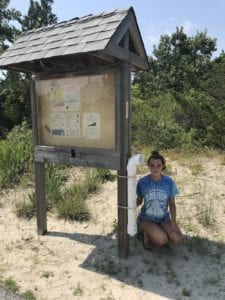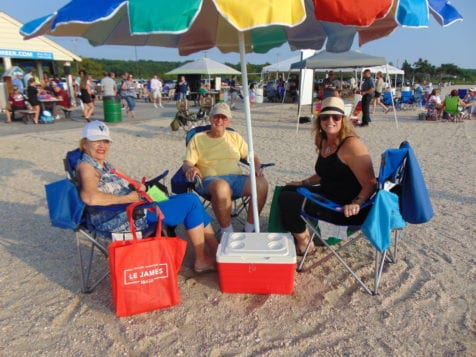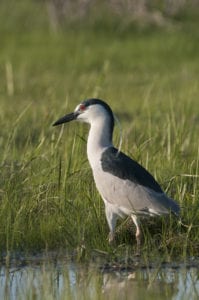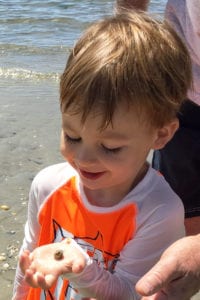A local Girl Scout’s project has been a golden opportunity to help make one beach a little bit cleaner and safer.
Lauren Reitano, a Girl Scout with Troop 2547 in Centereach, installed two monofilament recycling receptacles at West Meadow Beach Aug. 7 for her Gold Award project. The award is the highest a Girl Scout can achieve, and the project challenges high school students to identify and solve a community problem.

Reitano, 16, said she knew her undertaking would involve West Meadow Beach. She said she visits the Town of Brookhaven beach frequently and notices people leaving fishing lines behind. She decided to install the durable plastic receptacles made of polyvinyl chloride pipes at the town beach to provide a place for fishers to properly discard their fishing lines.
“A beach cleanup is great, but that’s not going to last,” the soon-to-be senior at Centereach High School said.
Reitano said the receptacles, which are located at the beginning of the nature path when entering from the parking lot, look like candy canes, and fishers can place lines in the top part of it. Every other week she will go to the beach to empty them, and in the future she can pass the project down to a younger Scout.
The Girl Scout said Brookhaven Town Supervisor Ed Romaine (R) stopped by the beach while she was installing them and chatted with her about the project.
“Installing the monofilament receptacles is doing a great service to the environment and protecting the wildlife in and around the water,” Romaine said in a statement. “Fishing line is one of the most frequent and hazardous forms of marine debris, and I thank Lauren for helping to prevent more plastics from getting into our waterways.”
To begin her project, Reitano sat with Brookhaven environmental educator Nicole Pocchiare who walked her through all the steps of the project, which involved working with the town to get approval for placement of the containers. Reitano said while the process with the town took a few months, the actual construction and installing of the receptacles was about a half-hour each. On Aug. 7, she spent approximately two hours at the beach with her mother and Pocchiare finding the ideal spots and measuring for proper placement.
“Installing the monofilament receptacles is doing a great service to the environment and protecting the wildlife in and around the water.”
— Ed Romaine
As they were completing the installation, Reitano said a bicyclist thanked them and told her he witnessed people handling discarded lines and hooks getting cut by the hooks.
“It’s dangerous for people and animals as well because when it gets in the water, it can strangle them,” Reitano said.
Her mother, Robyn, who is a co-leader with Troop 2547, said she was proud of her daughter, who is usually quiet, being persistent enough to get the job done by going through the proper channels with the town for approval and waiting for a response.
“It makes me feel good as a life lesson
because she was able to really see it through,” the mother said.
Lauren Reitano said Girl Scouts should choose something they are interested in when looking to earn a Gold Award because the project can take some time.
“If you really don’t have an interest in what you’re doing, then it’s going to drag on,” she said. “If you have an interest in the topic — like I have an interest in the beach and the environment — it’s going to be super fun.”




















 Judy Welter recently snapped a photo of her 2-year-old grandson, Connor, at West Meadow Beach in Stony Brook holding his very first hermit crab. She writes, “He couldn’t be more delighted. My son’s picture [Connor’s uncle] appeared in your newspaper 41 years ago. He too, was playing by the shore at low tide and is pictured with a hermit crab in hand. Time for the next generation to discover our wonderful beach.”
Judy Welter recently snapped a photo of her 2-year-old grandson, Connor, at West Meadow Beach in Stony Brook holding his very first hermit crab. She writes, “He couldn’t be more delighted. My son’s picture [Connor’s uncle] appeared in your newspaper 41 years ago. He too, was playing by the shore at low tide and is pictured with a hermit crab in hand. Time for the next generation to discover our wonderful beach.”



